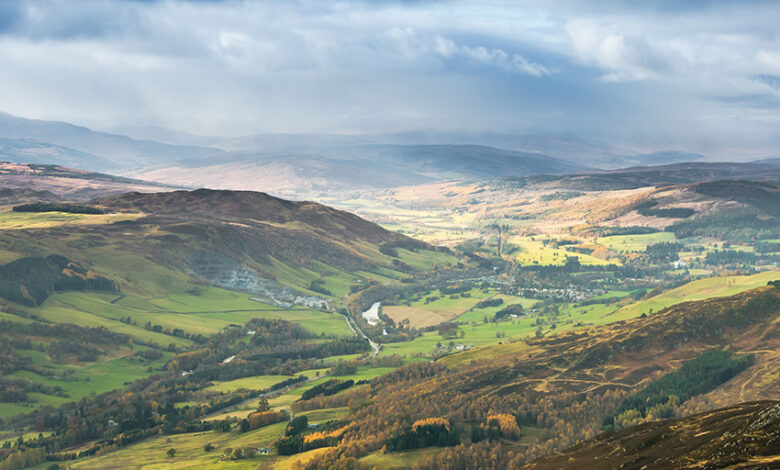Making regeneration environmentally friendly

Emilie Wadsworth, Operations Director of the Green Action Trust, explains how green infrastructure investment, in addition to playing its part in combatting climate and biodiversity change, is a vital means of regenerating deprived communities.
The Green Action Trust is a regeneration charity which works with the Scottish Government, as well as local government throughout Scotland, to provide environmentally sound regeneration programmes throughout Scotland, such as the Central Scotland Green Network (CSGN), which is investing in the central Scottish belt, one of the most economically deprived areas in the United Kingdom.
The Trust has acted as a key partner of the Scottish Government in the delivery of the Central Scotland Green Network, which is the largest blue-green infrastructure initiative of its kind in Europe.
Maximising regeneration
In order to realise the ambitions of the CSGN, Wadsworth outlines how there has been “increased recognition” of the work carried out by the organisation over the last four years.
“We are now focusing very much on biodiversity connectivity, environmental regeneration – particularly in deprived areas, remediation of vacant derelict land, and multi-functional green infrastructure to address both the biodiversity and the climate crises.”
She details her conviction that “the holy grail is a project that does not only do net zero, or a project that does health or climate, but a project that delivers everything all in the one go. It is the best way of utilising your resources”.
Wadsworth has high praise for the Scottish Government for its co-operative approach to working, as demonstrated by the Vacant and Derelict Land Investment Programme. “It would be really easy for the Scottish Government regeneration team to just do a small number of really high-profile projects, decontaminating land, and putting houses on them, but the regeneration team spoke to colleagues in other departments and decided that they wanted to set criteria which prioritised green, prioritised biodiversity, and prioritised net zero.”

“The holy grail is a project that does not only do net zero, or a project that does health or climate, but a project that delivers everything all in the one go. It is the best way of utilising your resources.”
Emilie Wadsworth, Operations Director of Green Action Trust
10,000 Raingardens for Scotland
Wadsworth explains how the Green Action Trust has played a leading role in the 10,000 Raingardens for Scotland programme, which has helped to deliver multi-functional climate adaption interventions throughout the country.
Under the auspices of this programme, Wadsworth says that the Trust has the ambition of “trying to install natural surface water management tools and ensuring that the right infrastructure is in place to manage flooding right across Scotland”.
Green infrastructure, Wadsworth explains, is a term which “has been floating around Scotland for a long time”, and that green infrastructure “has the advantage in that it refers to natural, semi-natural, and built environments”.
“We can talk about rivers, peatlands, and wetlands, but we can also talk about parks and green spaces. We can also talk about green roofs, green walls, and some more innovative features that we can start to use in urban areas right now.”
In Scotland, a Programme for Government is issued for each year, rather than for a parliamentary term, as is the case with the Irish Government. Wadsworth outlines how the Scottish Government has made green regeneration a central feature in recent programmes for government, particularly with a focus on a green recovery from the Covid-19 pandemic and as an essential tool to address the current cost of living and energy crises.
Wadsworth believes that the Green Action Trust can play a key role in ensuring that the recommendations released by the Scottish Just Transition Commission can be taken into account, with regeneration playing a key role in ensuring that Scottish infrastructure and housing is equipped to help Scotland achieve its net zero ambitions by 2050, with interim targets of 75 per cent renewable power by 2030.
The future
Explaining that whilst “there is a lot to be enthusiastic about” with policy development and the rollout of such policy in Scotland, Wadsworth outlines concerns over the timeliness of such prospective developments being implemented.
Regarding the CSGN, she states that there is a “promising future ahead” and that the working relationship between the Green Action Trust and the Scottish Government is only showing signs of growing stronger.
“We have got the fourth National Planning Framework [NPF 4] which is a significant achievement; it is the only national development which has survived three national planning frameworks and the CSGN is a national development in NPF 4 again.”
Whilst the signs are promising, Wadsworth remains grounded: “We need to develop partnerships and programmes that would help deliver the CSGN. It cannot always be delivered by the planning authority, and there are lots of those players involved, which is basically what we have been doing over the last 10 years or so.”





